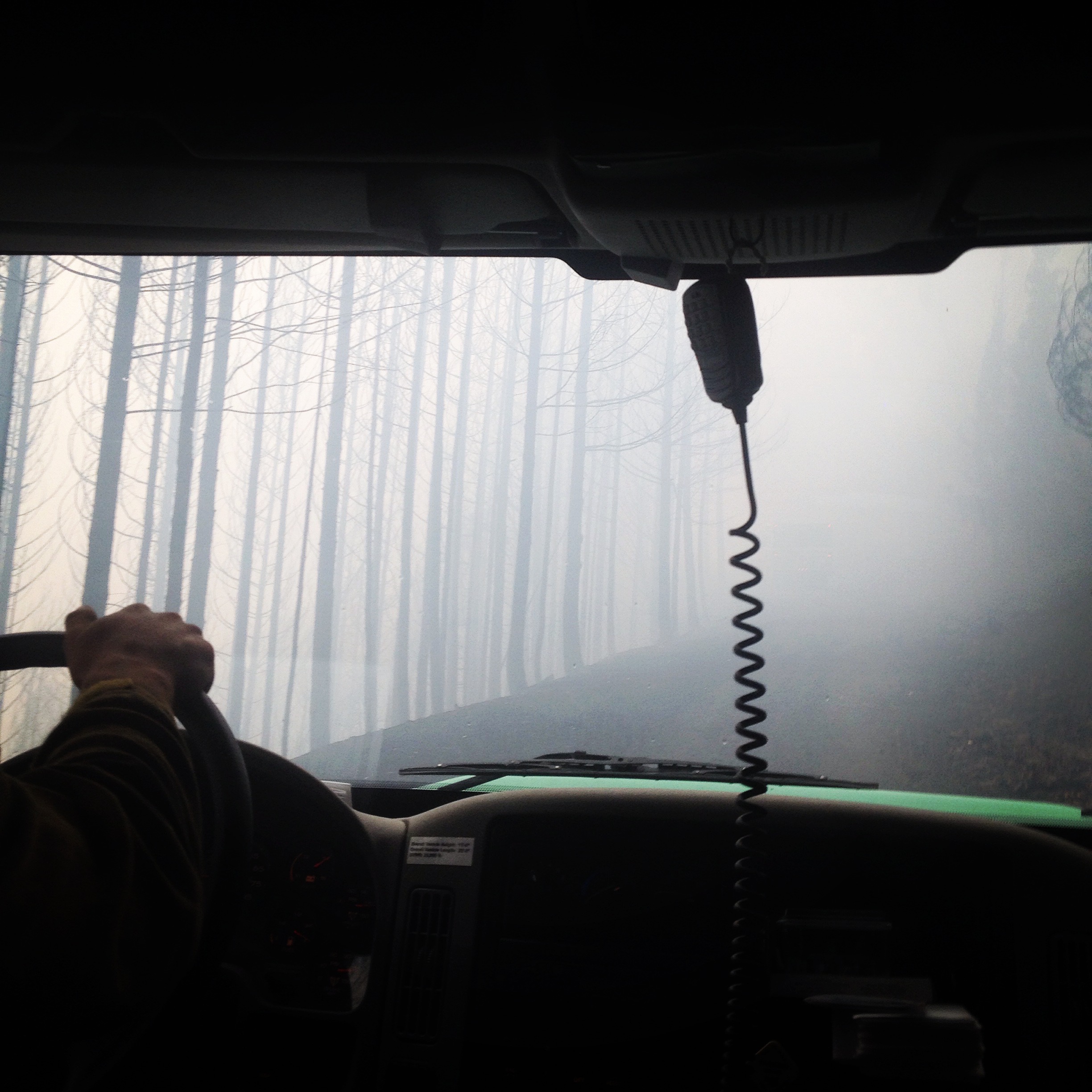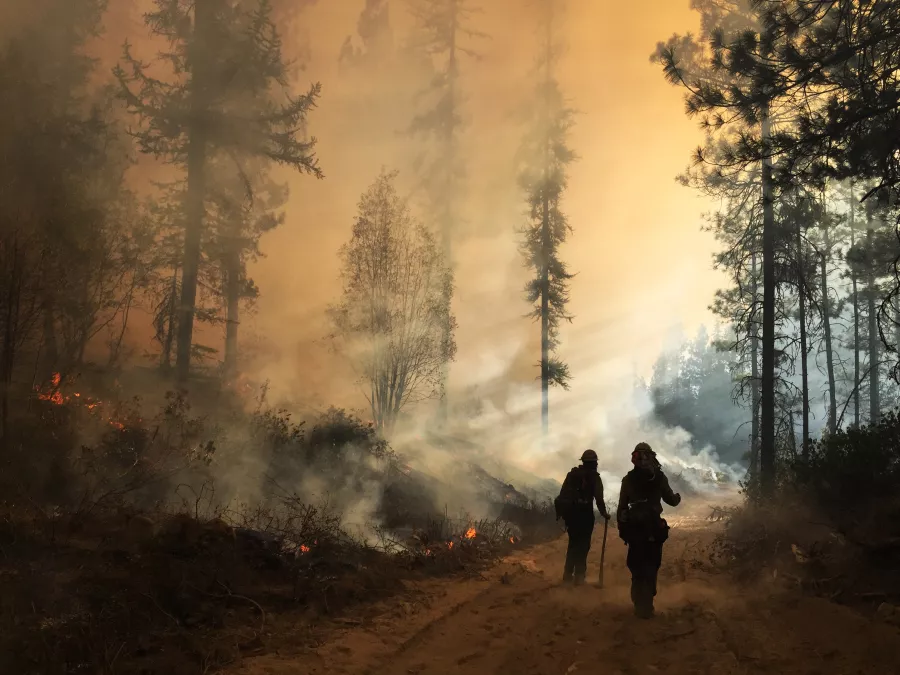The days are long and can range from tedious, to exhausting, to downright fun. You’re dirty, sweaty, wearing a heavy pack all day, incessantly moving up and down steep slopes. If you're a sawyer then you're packing a saw and cutting trees and brush and tossing it out of the fuel break to make way for the diggers to put in a handline behind you. That's the bread and butter of firefighting: cutting and digging. When I was a hotshot I could barely keep track of what day it was, what fire we were on, what state we were in... it all blends together.
The geography of the Western United States is so variable, but the gist (of wildland firefighting) is: You put a line around the fire -- handline, dozer line, roads, rivers, whatever -- and hold that line with whatever methods you've got, hoselays, helicopter water drops, retardant, mainly just brute ground labor. If you can't put a line around it, you draw a big box and either wait for the fire to come to you or you burn it out, and hold it. They call it fighting fire with fire, but it’s more like making the fire bigger on your own terms.

